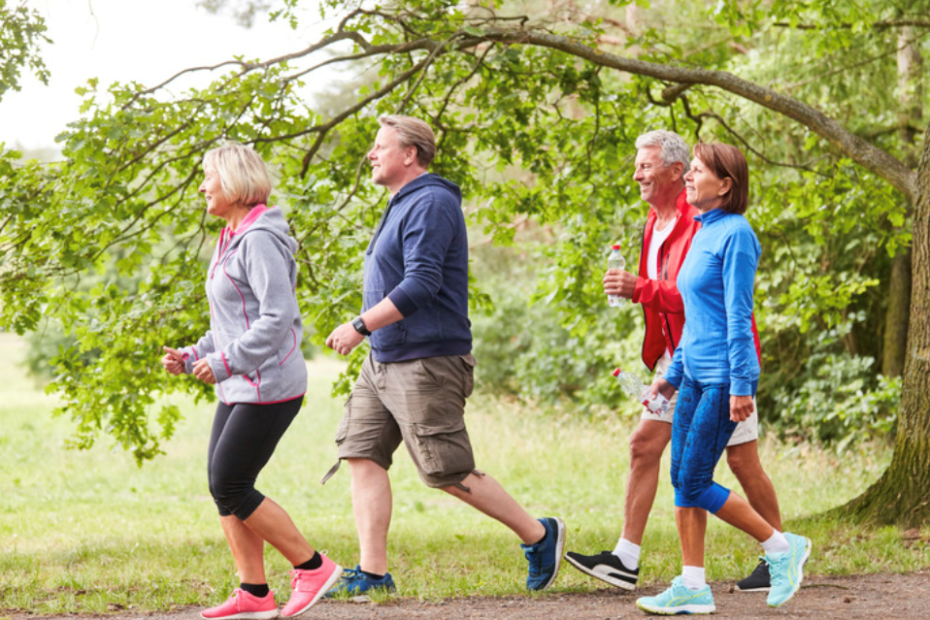Although it’s great to get to the gym, dance class, zumba class or yoga studio, simply going for a walk is a valid – and valuable – form of exercise.
Walking improves circulation, supports the joints, raises the heart rate and improves cardiovascular fitness. Not to mention the mental health benefits and the Vitamin D exposure if you’re lucky enough to be in a warmer climate.
For people with Parkinson’s Disease, some of the most common symptoms occur during gait (walking). These can include ‘freezing’, ‘shuffling’, reduced stride length and reduced arm swing. Because of this, walking as exercise is a great way for people with PD to apply specificity to their training.
Specificity – when your exercise programme is relevant to the goal/outcome
Some suggestions to further optimise a nice stroll in the park for people with PD include:
💫 Listening to music and walking in time to the beat:
- Rhythmic stimulation through music and sound has been shown to improve motor deficits in a variety of movement disorders
- Rhythmic auditory stimulation can significantly improve common PD symptoms such as gait hesitancy, ‘freezing’ & shuffling
- Music can further improve gait in people with PD by increasing gait tempo, lengthening stride, encouraging arm swing and reducing gait variability
💫 Carrying something on your walk
- Carrying a moderate weight builds muscle strength & endurance, and can also improve posture, core stability and balance
- You don’t need hand weights, dumbbells or kettlebells – you could also use things like a big bottle of water, some books, a handbag or backpack.
💫 Varying your route
- If you take the same route everyday you’re likely to get bored – and so will your brain
- The brain thrives from novelty- so experiencing new environments – including different routes or terrains could help to promote neuroplasticity
Resources:
Lindh-Rengifo, M., Jonasson, S.B., Ullén, S. et al. Perceived walking difficulties in Parkinson’s disease – predictors and changes over time. BMC Geriatr 21, 221 (2021). https://doi.org/10.1186/s12877-021-02113-0
Jones D, Rochester L, Birleson A, Hetherington V, Nieuwboer A, Willems AM, Van Wegen E, Kwakkel G. Everyday walking with Parkinson’s disease: understanding personal challenges and strategies. Disabil Rehabil. 2008;30(16):1213-21. doi: 10.1080/09638280701828955. PMID: 18608374.
Reuter I, Mehnert S, Leone P, Kaps M, Oechsner M, Engelhardt M. Effects of a flexibility and relaxation programme, walking, and nordic walking on Parkinson’s disease. J Aging Res. 2011;2011:232473. doi:10.4061/2011/232473
Oliveira de Carvalho A, Filho ASS, Murillo-Rodriguez E, Rocha NB, Carta MG, Machado S. Physical Exercise For Parkinson’s Disease: Clinical And Experimental Evidence. Clin Pract Epidemiol Ment Health. 2018;14:89-98. Published 2018 Mar 30. doi:10.2174/1745017901814010089

